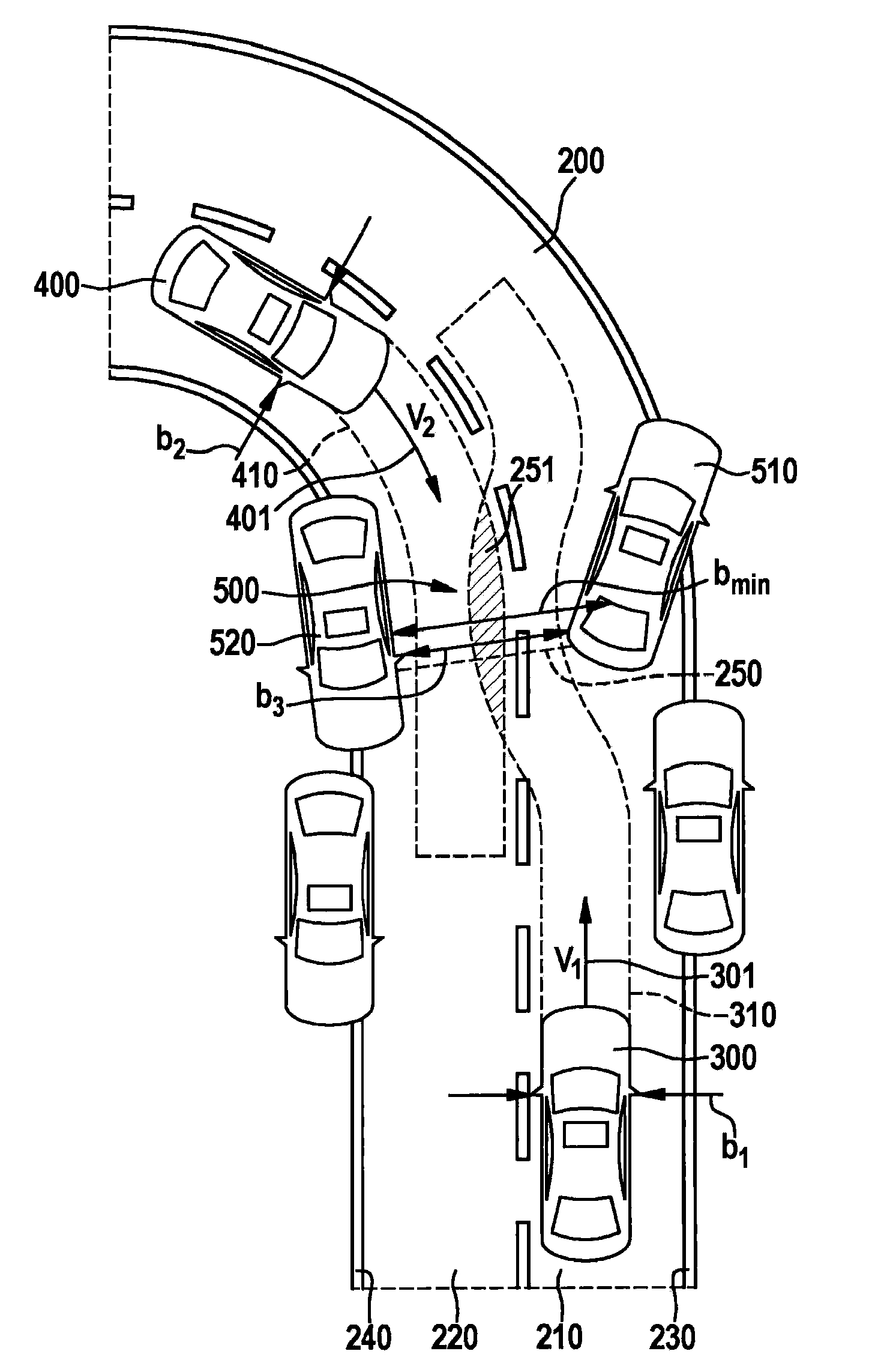Driver-assistance system and method for operating the driver-assistance system
a technology of driver assistance and driver assistance, which is applied in the direction of process and machine control, pedestrian/occupant safety arrangement, instruments, etc., can solve the problems of system deactivation, system response execution or failure to be executed, similar irritation of vehicle drivers, etc., to improve the predictability of potential collisions
- Summary
- Abstract
- Description
- Claims
- Application Information
AI Technical Summary
Benefits of technology
Problems solved by technology
Method used
Image
Examples
Embodiment Construction
[0022]FIG. 1 shows a driver-assistance system 100 according to the present invention in a schematic representation. Driver-assistance system 100 includes multiple functional blocks 110 to 150, which represent individual functionalities or functionality levels of driver-assistance system 100. Depending on the design, the individual functionalities may be integrated in the form of separate functional units or be integrated together with other functionalities in a shared functional unit in software and hardware form. First functional block 110 represents a detection device having a surround sensor system for detecting the traffic environment of the vehicle. The surround sensor system may include different sensing and detection devices which detect objects in the environment of vehicle 300 and determine characteristics of the detected objects. Different measuring methods may be used, such as video, radar, lidar, sonar, etc. All suitable detection and measuring methods are basically conc...
PUM
 Login to View More
Login to View More Abstract
Description
Claims
Application Information
 Login to View More
Login to View More - R&D
- Intellectual Property
- Life Sciences
- Materials
- Tech Scout
- Unparalleled Data Quality
- Higher Quality Content
- 60% Fewer Hallucinations
Browse by: Latest US Patents, China's latest patents, Technical Efficacy Thesaurus, Application Domain, Technology Topic, Popular Technical Reports.
© 2025 PatSnap. All rights reserved.Legal|Privacy policy|Modern Slavery Act Transparency Statement|Sitemap|About US| Contact US: help@patsnap.com



